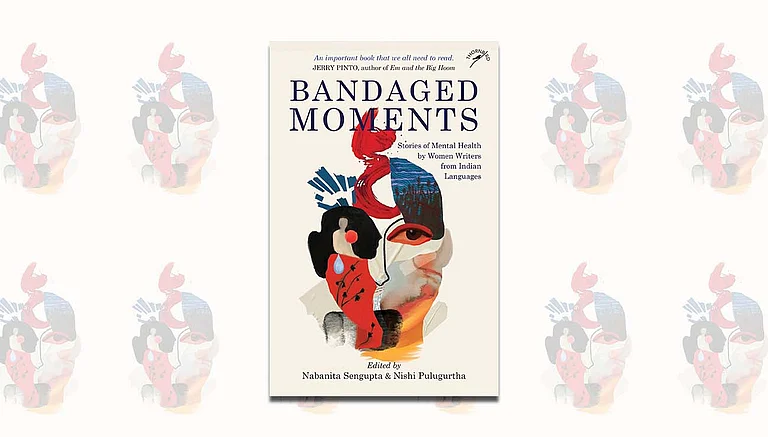
The mentally ill have always been with us as those who behaved in a 'mad' manner.
For millennia, the ‘why’ of ‘why do people go mad’ was debated.
Some of the earliest mental hospitals were set up in Virginia (1773) and Bengal (1780).
In a damning criticism of the colonial government, a prominent psychiatrist pointed out in 1937 that “it would be difficult for the most jingoistic to affirm that, in the matter of provision for mental disorder in India, in India, the British ‘bearing of the white man’s burden’ has been quite adequate.” But have we, as an independent nation, done a better job?
The mentally ill have always been with us; and every known historical account recounts those who behaved in a mad manner. For millennia, the ‘why’ of ‘why do people go mad’ was debated, and in the absence of any other obvious observable evidence, it was assumed that it was the work of the Devil, or the consequence of moral or religious transgression. All societies and religions assumed that only these could cause a fall from grace, which altered a person in thought and deed to the extent that they could be considered beyond the pale, devoid of humanness, and thus lose their place in society.
It was only a few hundred years ago—prompted by the dramatic change in our thinking about the natural world—that sickness and disease began to be understood as a natural phenomenon. The laws of physics, chemistry and biology, and the instruments that were invented (thermometer, microscope, stethoscope, etc.) could help record the temperature of the body, measure gases in respired air, and even detect bacteria in pus. The mythical fear of illness vanished, and it simply became a problem to be solved. The appearance of doctors, who practised this new natural science in hospitals, where the sick could be treated, was thus a recent modern invention.
Though those with mental illness had been housed in separate buildings in the Middle East and Europe since the beginning of the millennium, their care gradually shifted to this new class of professionals—the doctors. They were not overly concerned about the ‘why’ that had preoccupied the religious thinkers, but more with the ‘how’ ‘when’ and ‘where’ to treat. This shift from the ‘why’ to the ‘how’ was common to all fields of enquiry, from observing the behaviour of the stars, to the varying pulsations of the heart, to the speech and manners of the mentally ill. In addition, the increasing affluence of Europe made it possible for communities to finance the building of asylums, and a network of parish and municipal community-owned services as well as private asylums soon developed.
This allowed the principles of natural science to be applied to afflictions of the mind and the disciplines of psychiatry and psychology to emerge, about 300 years ago, in Europe. As these influences spread across the world through trade and colonisation, asylums appeared in the extreme edges in the northern hemisphere, in America and in India. Mental hospitals were set up in Virginia (1773) and Bengal (1780), and by the middle of the 19th century, in California and Tezpur. They were seen as an essential service, and the tangible proof of responsible civic governance and rule.
Several asylums were built in India in the 19th century, from Madras to Tezpur to Peshawar, but they offered only a few thousand beds, and had minimal professional staffing, typically with one European doctor and a few Indian medical graduates as sub-assistants. They were mostly housed in disused buildings, and the attenders and other staff were always in shortage, and often found deeply unsatisfactory. However, the asylums soon became a fixture in the public consciousness since this was the first time the State was providing care to the most disadvantaged. They quickly became overcrowded, often being used as a place of refuge for the destitute and the disabled. Research papers and hospital reports described the diversity of backgrounds (from priests, homemakers, landlords, farmers, soldiers, itinerant fakirs and beggars), and symptoms. Patients were often found in maniacal excitement, noisy, neglected, emaciated; as also those with developmental disorders, epilepsy and senility.
Several asylums were built in India in the 19th century, from Madras to Tezpur to Peshawar, but they offered only a few thousand beds, and had minimal professional staffing.
Overall, it was emphasised that the features of insanity were more or less the same as in England and Europe. Recoveries were common, and most patients could be discharged to their care of their families in a few months. Ganja and grief were found to be the cause in a few, as were intemperance and a dissolute life. With the enactment of the various lunacy laws, criminal lunatics and those picked up for minor offences would end up staying for longer periods. There was much debate on whether large asylums, which offered economy of scale, and more specialised services; or small district-based services closer to the community should be encouraged; or even foster families be found for the recovered. These suggestions mirrored similar discussions in Europe. However, since it was an extractive colonial administration, and public health in general was poorly funded, the mental hospitals seldom reached the ‘total’ institutions described in Europe and the USA.
The setting up of dispensaries, hospitals and asylums as part of the ruling dispensation was also subject to political factors, and parsimony. The creation of Assam, as the empire shifted East, had necessitated a new asylum in Tezpur. Asylums were established in the North as far as Delhi, but since the asylum was sacked in 1857, it was ultimately shifted to Lahore, as the central asylum for the Punjab. The Madras presidency asylums included Visakhapatnam and Madras on the East coast to Calicut, on the West coast. The Bombay presidency had a number of asylums in Poona, Bombay and Hyderabad (Sind). Only a few of the native kingdoms (Mysore, Hyderabad [Deccan]) maintained asylums.
By the end of the 19th century, the treatment of the insane in India was severely criticised in professional circles in the UK. The lack of specialists was the most evident, as in the 19th century in Europe, specialists in psychiatry and neurology had emerged from the hospitals of Germany, France and the UK, following the advances in medical care and services there. To correct this, by the early 20th century, doctors with special interest in diseases of the mind were encouraged to work in India, and a number of textbooks to supplement the skills of the doctors studying in the medical schools were written. After WWI, a specific effort to improve psychiatric services was initiated.
Scores of doctors from all over India, such as Banarsi Das from Agra and Purushottam from Madras, were sent to England for advanced training in psychiatry. The interwar years were also a period of technological advancements. The infective origin of syphilis was discovered, and one of the common causes of insanity thus became obvious. Treatments such as malaria therapy, insulin coma, convulsive therapies and lobotomy were developed, and were used quickly and widely across mental hospitals in India. Other methods such as psychotherapy, especially using Freudian psycho-analytical frameworks, were attempted in many places, especially in Calcutta, Lahore and Bombay. In Calcutta, it was shown that extracts from the root of the sarpagandha plant, used in traditional and folk medicine to treat madness, were actually quite effective. This became the first ever ‘drug’ treatment for insanity in the world, and was used widely in mental hospitals across the subcontinent. As those who had experienced mental illness most often went back to live in society, concepts of mental hygiene and how to prevent mental illness, through social reform and better family environment for children, were also widely discussed. In a sense, madness became humanised.
In the absence of a community of care, families are left to cope as best as they can. At the same time, families are smaller now, and social life more atomised.
The second half of the 20th century saw rapid change. Following the independence of the countries in the subcontinent, the patients in the mental hospitals too had to be divided (as famously satirised by Manto in Toba Tek Singh; but a tragic reality in hospitals across India). The patients in the large hospitals of Ranchi and Lahore, the hospitals of the Bengal and Punjab regions (which were partitioned), were redistributed across borders. The strains produced by the Partition, and the economic consequences, pushed public health into the background. Surprisingly, the psychological consequences of the violence experienced during colonial rule and the Partition of India seldom found place in academic or medical debate. The Indian Medical Service was disbanded immediately after independence, and the doctors moved to the provincial services. There were fewer than 50 psychiatrists in the whole of India (which was, however, more than that in Australia or Canada) at that time.
***
Drugs that were quite effective in reducing some of the symptoms of severe forms of mental illness emerged in the 1950’s in India. These quickly became available, helped also by an expansion of the pharmaceutical industry, and it was suggested that most patients would recover well, if drug treatments were made accessible. Small numbers of specialists began graduating from the institutes in Bangalore (the AIIMH, 1954) and the AIIMS (1956). Today, over a thousand psychiatrists graduate every year, and almost 20,000 psychiatrists work in the country. Hundreds of medical colleges have been established, but the existing mental hospitals did not become part of this university system, and those with serious chronic illnesses were thus left out. The hospitals gradually developed an atmosphere of neglect and horror; rather than being places of refuge. As a consequence, since the mental hospitals were neither reformed or transformed, and the public services did not keep up, the total number of ‘beds’ available for those with mental illness is less than three for 100,000. This is a stark contrast when compared to more than 30 beds for every 100,000 in other countries with comparable economies. Although we understood how to treat, and by whom, the debate shifted to when and where to treat.
As drugs became the mainstay of treatment, and mental asylums got mired in the backwaters of provincial administration, different models for services and care for the mentally ill became necessary. The family, and community, were now proposed as the mainstay of support. The absence of any meaningful reform of the mental hospitals, and failure to integrate them into general care services meant that psychiatric services were viewed quite differently from those for physical illness. While the specialist services for cardiology, endocrinology, nephrology (the other non-communicable diseases (NCDs) proliferated, those for psychiatric care hardly changed.
The lack of beds also means that enough detailed experience on handling diverse problems has not been built up. In the absence of a community of care, families are left to cope as best as they can. At the same time, families are smaller now, social life more atomised, and migration and civic chaos amplify psychological distress. The numbers of those with mental health problems has increased dramatically, while those who have more severe forms of mental illness find it increasingly difficult to maintain a dignified existence, or even get appropriate care. This is despite the fact that about a decade or more ago, the government urged that mental illness should be viewed in the same way as the other NCDs. But despite the best of intentions, mental health services, and the mentally ill, continue to be neglected.
Although the how, where and when to treat are now better understood, or at least debated, the fundamental issues of ‘why’ continue to be obscure. Diseases of the mind and brain remain the most ill-understood, and psychological, social and biological factors are intertwined in complex ways. We know from experience, and history, that nothing defeats stigma better than knowledge itself, as we learned from the societal responses to epilepsy, HIV-AIDS, etc. Although India has thousands of professionals and millions of patients, research contributions into the ‘why’ of mental illness sadly still remain miniscule.
(Views expressed are personal)
Sanjeev Jain is a clinician & a teacher, he researches the genetic correlates of psychiatric & neurological disease
MORE FROM THIS ISSUE
In its August 21 issue, Every Day I Pray For Love, Outlook collaborated with The Banyan India to take a hard look at the community and care provided to those with mental health disorders in India. From the inmates in mental health facilities across India—Ranchi to Lucknow—to the mental health impact of conflict journalism, to the chronic stress caused by the caste system, our reporters and columnists shed light on and questioned the stigma weighing down the vulnerable communities where mental health disorders are prevalent. This copy appeared in print as 'Asylum'.









.png?auto=format%2Ccompress&fit=max&format=webp&w=768&dpr=1.0)





















